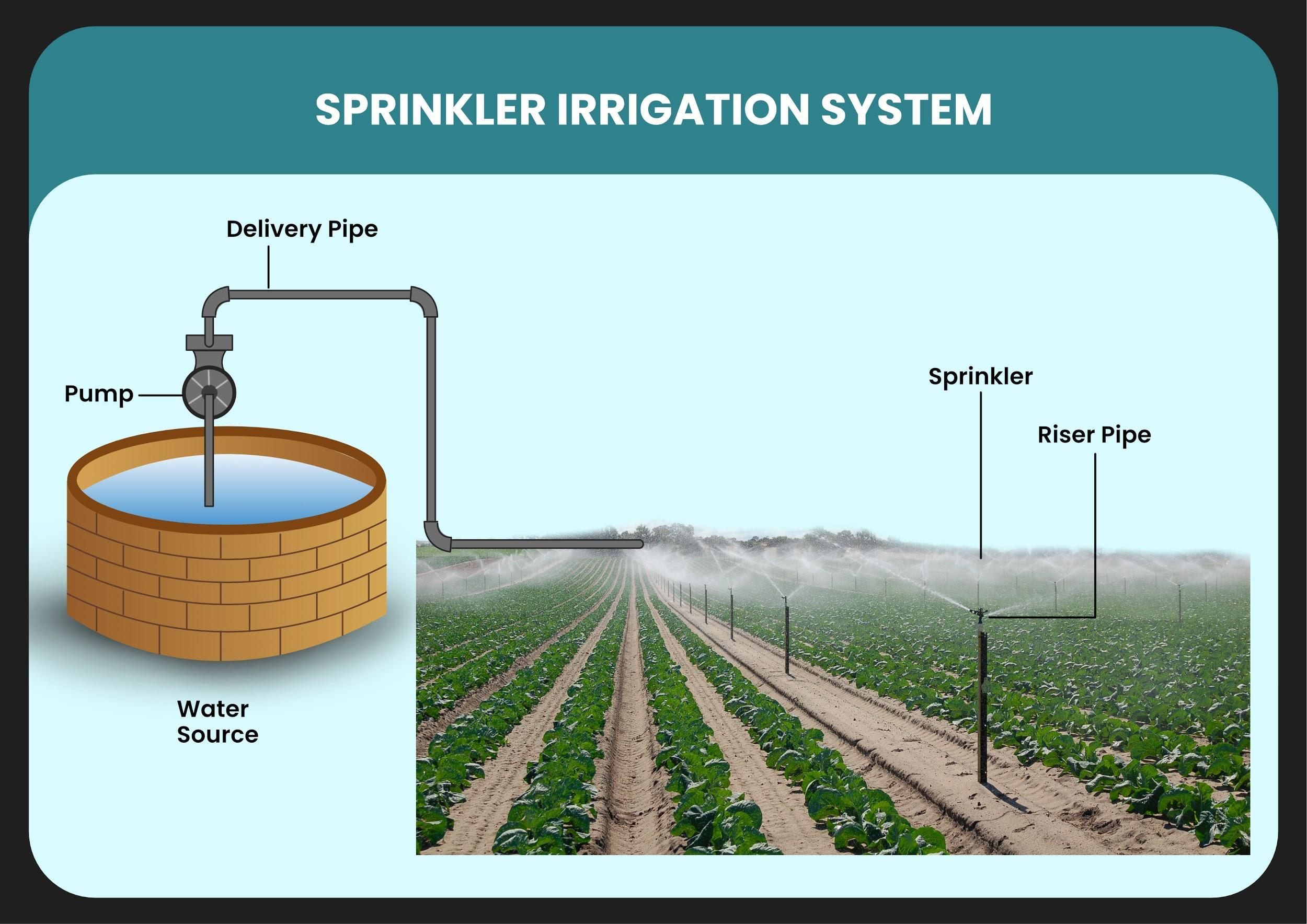
______ system of irrigation is more useful on uneven lands.
(a) Sprinkler system
(b) Rahat
(c) Drip system
(d) Dhekli
Answer
556.5k+ views
Hint: An irrigation device that, with the aid of a pump, allows water to be applied under high pressure is more useful on uneven ground. This process lowers the cost of labour. It doesn't include procedures for levelling.
Complete answer:
On uneven terrain where adequate water is not available, the sprinkler system is more useful. In this procedure, water is supplied to one or more central locations within the field using pipes. It gets sprayed on the crops when water is allowed to flow under high pressure with the aid of a pump.

Through a small diameter nozzle mounted in the pipes, it releases water close to rainfall. Due to a broad range of discharge power, water is distributed through a system of pipes, sprayed into air and irrigated in most soil types.
For an uneven ground surface, the irrigation sprinkler system will be best as it does not require investment in levelling procedures. With the help of sprinkler heads like rain falling on the earth, it also conveys water uniformly over the earth.
Additional information: Drip irrigation is a form of micro-irrigation system that can conserve water and nutrients by allowing water, either from above the soil surface or buried below the surface, to drip slowly to the roots of plants.
A wide well in which a wheel is used is needed for the Rahat System of irrigation. To get the water out of the well and then spread it out over the crops, the wheel is turned by oxen, buffalo or cows.
Dhekli is a conventional irrigation system which is used primarily in rural areas. It is handled manually. The person had to take water out and dump it into the field through a bucket. This causes a lot of water waste, and now people do not use this form of irrigation because of water scarcity.
So, the correct answer is, ‘(a) Sprinkler system’.
Note: Some of the benefits of the sprinkler system include removing water conveyance channels, suitable for all forms of soil except heavy clay, reducing conveyance loss, suitable for irrigation where the plant population per unit area is very high, helping to increase yield and reducing soil compaction.
Complete answer:
On uneven terrain where adequate water is not available, the sprinkler system is more useful. In this procedure, water is supplied to one or more central locations within the field using pipes. It gets sprayed on the crops when water is allowed to flow under high pressure with the aid of a pump.

Through a small diameter nozzle mounted in the pipes, it releases water close to rainfall. Due to a broad range of discharge power, water is distributed through a system of pipes, sprayed into air and irrigated in most soil types.
For an uneven ground surface, the irrigation sprinkler system will be best as it does not require investment in levelling procedures. With the help of sprinkler heads like rain falling on the earth, it also conveys water uniformly over the earth.
Additional information: Drip irrigation is a form of micro-irrigation system that can conserve water and nutrients by allowing water, either from above the soil surface or buried below the surface, to drip slowly to the roots of plants.
A wide well in which a wheel is used is needed for the Rahat System of irrigation. To get the water out of the well and then spread it out over the crops, the wheel is turned by oxen, buffalo or cows.
Dhekli is a conventional irrigation system which is used primarily in rural areas. It is handled manually. The person had to take water out and dump it into the field through a bucket. This causes a lot of water waste, and now people do not use this form of irrigation because of water scarcity.
So, the correct answer is, ‘(a) Sprinkler system’.
Note: Some of the benefits of the sprinkler system include removing water conveyance channels, suitable for all forms of soil except heavy clay, reducing conveyance loss, suitable for irrigation where the plant population per unit area is very high, helping to increase yield and reducing soil compaction.
Recently Updated Pages
Master Class 12 English: Engaging Questions & Answers for Success

Master Class 12 Business Studies: Engaging Questions & Answers for Success

Master Class 12 Economics: Engaging Questions & Answers for Success

Master Class 12 Social Science: Engaging Questions & Answers for Success

Master Class 12 Maths: Engaging Questions & Answers for Success

Master Class 12 Chemistry: Engaging Questions & Answers for Success

Trending doubts
What are the major means of transport Explain each class 12 social science CBSE

Which are the Top 10 Largest Countries of the World?

Draw a labelled sketch of the human eye class 12 physics CBSE

Explain sex determination in humans with line diag class 12 biology CBSE

The pH of the pancreatic juice is A 64 B 86 C 120 D class 12 biology CBSE

Explain sex determination in humans with the help of class 12 biology CBSE




